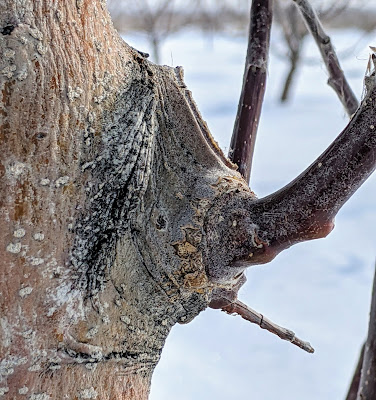Lesson 7: Maintenance Pruning
If you stay on top of your structural pruning every year, you will be able to maintain that structure with very little effort. Maintenance pruning consists of three priorities.
- Thinning
- Tipping
- Rotating
This is the 7th part of a 9 lesson pruning course. If you would like to start from the beginning, please follow this link:
If you would like to go to the previous lesson, please follow this link:
Thinning
As your tree matures, each and every branch is getting longer and forking in many different directions. You will want to continue to thin your tree every year, so it can receive the light it needs. Remember in the previous lesson there were eight steps to pruning? Well, now that you understand and have implemented those steps, you have developed a good structure in your trees and you can start combining steps together in order to accomplish the thinning priority of maintenance pruning. Thinning includes the following steps from the previous lesson:
- Removing Suckers
- Thinning or tipping water sprouts
- Removing crossing or parallel branches
- Removing dead, dying, diseased, or damaged branches
- Removing lion's tails, and weak unproductive branches
- Balancing the tree
6 of the 8 steps in the previous lesson are just different ways of thinning your tree so that it can receive the light it needs without all of the clutter.
 |
| Trees With Good Structure Just Need Thinning and Tipping |
Tipping
Once your tree has reached it's maximum height, which is the maximum height that you decide you want your tree to be, you will want to maintain that height every year. How do you do that? First, find your pruning cut from last year. Notice that the top 3-5 lateral buds have all become water sprouts? This year you will make a new pruning cut just above the lowest water sprout that is pointing in the direction that you want your tree to grow. Next, you will tip back the remaining water sprout at the exact same height of last year's pruning cut. If you do this year after year, your fruit tree will never get any taller than it already is.
 |
| Click Image to Zoom |
Rotating
As you thin and tip your fruit tree, you are actually rotating old wood for new wood. In other words, you are removing the old and making room for the new, but there are times when parts of you tree just needs a fresh start. I don't recommend doing it all at once, but every year, you will need to take out your saw and remove a four or five year old branch near the center of the tree. If you don't, you will see that your tree is becoming too crowded and is becoming less productive. When you do this, you will need to make sure that you are using a "bevel cut" or "dutch cut" remember we said to cut branches perpendicular to their growth to minimize the surface area of the cut? Well a bevel cut breaks that rule.
 |
| Bevel Cuts Will Stimulate New Growth from Pruning Cuts |
A bevel cut is made by angling your cut from the bottom of the branch, in towards the collar. By leaving this lip, you are giving the branch permission to send up water sprouts below the cut. These new water sprouts will replace the large branch that you removed. Stimulating younger, more productive branches in the future.
By following these three priorities, you will be able to maintain the size, health and productivity of your fruit tree with very little effort. The secret is to prune every single year, so that you don't have to correct problems that could have been avoided with regular pruning.
Click Here to help us improve this course.



Sir good morning
ReplyDeleteI'm Anil Sharma from India.I have pruned all my garden, what should I do next? Can I mix copper with horticulture mineral oil
Dormant oil can be mixed with copper and is best used in the early spring. If you spray after pruning you will save on spray, because you wont have to spray the branches that you cut off your tree.
DeleteThe bevel cut may look like a protruding chin or lower lip, or both. Ha!
ReplyDeleteCorrect! Thanks for the comment.
Delete